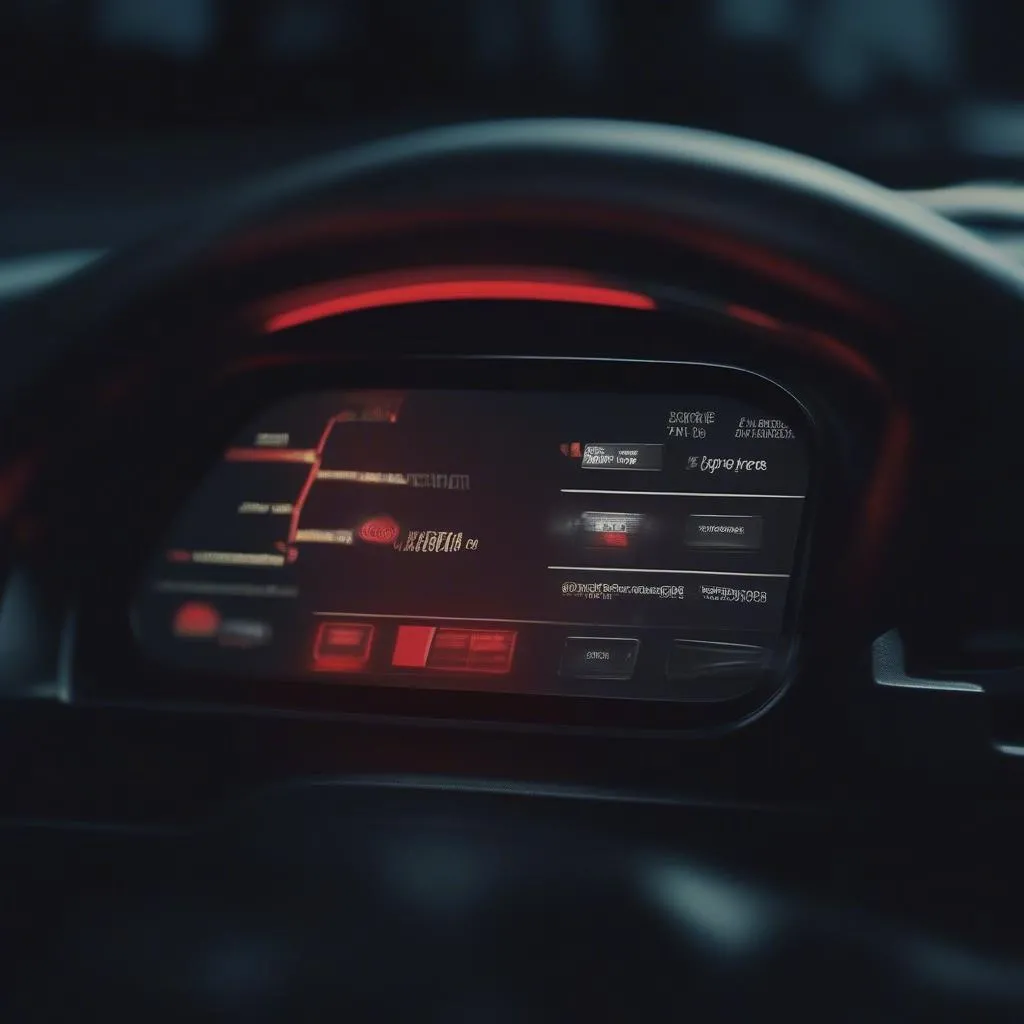You’re driving home late at night when you see a flashing light on your dashboard. You pull over, heart pounding, and realize it’s the anti-theft light. What does it mean? More importantly, does my vehicle have an anti-theft device? Let’s clear up the confusion surrounding vehicle anti-theft systems and how to know what security measures your car has.
Understanding Vehicle Anti-Theft Systems
Most modern cars come equipped with some form of anti-theft system, even if it’s just a basic immobilizer. This system prevents the engine from starting without the correct key. More sophisticated systems can include:
- Keyless Entry: This allows you to lock and unlock your car without a physical key.
- Alarm Systems: These emit a loud sound if someone tries to break into your car.
- Tracking Systems: These use GPS to track your car’s location if it’s stolen.
- Immobilizers: This technology prevents the engine from starting without the authorized key, often using a transponder chip.
“As vehicle technology evolves, so do the methods employed by car thieves. A robust anti-theft system is no longer a luxury, but a necessity,” says Michael Carter, author of “Automotive Security: Protecting Your Vehicle in the Digital Age.”
How Can I Tell if My Car Has an Anti-theft System?
While there’s no universal way to check, here’s where you can start:
- Check your owner’s manual: The most reliable way to find out about your car’s security features is to consult your owner’s manual.
- Look for visual indicators: A flashing LED light on the dashboard, often red or green, usually signifies an immobilizer system. You might also find stickers on the car windows indicating the presence of an alarm system.
- Observe key features: The design of your car key can offer clues. A key with a thick plastic head often contains a transponder chip for the immobilizer system. If you have keyless entry or push-button start, your car likely has an advanced anti-theft system.
- Contact your dealership or manufacturer: If you’re still unsure, reach out to your car dealership or the manufacturer. They can provide specific details about the anti-theft features installed in your vehicle model and year.
 Car Dashboard with Flashing Anti-Theft Warning Light
Car Dashboard with Flashing Anti-Theft Warning Light
Troubleshooting Anti-Theft System Issues
Sometimes, anti-theft systems can malfunction, leading to frustrating issues like your car not starting. If you suspect a problem:
- Check your battery: A weak or dead battery can disrupt the anti-theft system’s functionality.
- Inspect your key: If you’re using a key with an embedded chip, ensure it’s clean and undamaged.
- Try a spare key: If you have one, see if using a different key resolves the problem.
- Consult a professional: If the issue persists, it’s best to consult a qualified automotive technician, especially one experienced in car electronics and diagnostics.
 Car Diagnostic Equipment and Laptop for Anti-Theft Troubleshooting
Car Diagnostic Equipment and Laptop for Anti-Theft Troubleshooting
FAQs About Anti-theft Systems
Here are some commonly asked questions about car security:
- Can I add an anti-theft system to my older car? Yes, you can often retrofit older vehicles with aftermarket anti-theft devices, like alarm systems or immobilizers.
- How much does it cost to fix an anti-theft system? The cost varies depending on the problem and your car model. It could range from a simple battery replacement to a more complex electronic repair.
- Are aftermarket anti-theft devices reliable? Reputable aftermarket security systems can provide an additional layer of protection, but it’s essential to choose a quality product and have it professionally installed.
For advanced diagnostics and troubleshooting of automotive electronic systems, including anti-theft devices, consider professional-grade tools from CARDIAGTECH.
Need more help with your car’s anti-theft system? Learn more about how Cardiagtech can assist with vehicle diagnostics and software solutions.
You might also be interested in:
